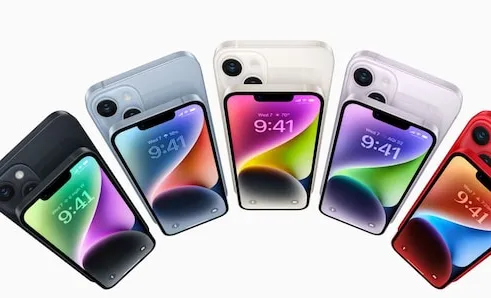Slow iPhone? Here’s how to improve performance – follow these simple tips
If your iPhone is slow and sluggish, it could be for a number of reasons, including software updates, low storage space, background apps, or services consuming unnecessary system resources. If you want to make it work faster, don’t worry. Apple has listed simple tips on its official support page to help you resolve performance issues.
If your iPhone freezes or has performance issues, try these tips.
– Check network conditions.
– Close the application that is not responding.
– Make sure you have enough storage space.
– Turn off power saving mode.
– Keep your device too hot or cold.
– Check the condition of the battery.
1. Check the online terms and conditions
According to the iPhone manufacturer, many applications require an Internet connection for their content and other functions. If the network you are connected to is congested, it may take a while for apps to open or display content.
Your device may also seem slow as it repeatedly connects to new cell towers when you are in a moving vehicle.
Even if your device reports a strong signal, you may need to wait, try again in another location, or use an available Wi-Fi connection.
If you continue to have problems with mobile data speed, availability or performance in multiple locations, please contact your carrier.
2. More information about mobile phone data
Close an app that isn’t responding – On your iPhone’s home screen, swipe up from the bottom of the screen and pause slightly in the middle of the screen. On iPhone 8 or earlier, double-click the Home button to see your recently used apps.
– Swipe right or left to find the app you want to close. Close the app by swiping up on the app preview. Under normal circumstances, forcing the application to close is not necessary and the device will not run faster. In fact, the app takes longer to open after a force close because it has to reload all of its data, Apple said.
3. Learn what to do if the app repeatedly stops responding
Make sure you have enough storage space – If your device’s storage space is low, iOS automatically frees up space when you install apps, update iOS, download music, save videos, and more. iOS only deletes items that can be reloaded or are no longer needed.
You can check your device’s storage space in Settings > General > [Device] storage space.
For best performance, try to keep at least 1 GB of free space. If your available storage is consistently below 1GB, your device may slow down as iOS or iPadOS repeatedly frees up space for more content.
4. Turn off power saving mode
– Low Power Mode is an iPhone and iPad feature that extends battery life by reducing the amount of power your device uses. In power saving mode, some features are turned off and some tasks may take longer to complete. If the battery icon is yellow, the power saving mode is on.
Consider leaving Power Saver off if you need your iPhone or iPad to run without power-saving restrictions. You can enable or disable power saving mode in Settings > Battery.
5. Look at the condition of the battery
– Over time, all iPhone models’ rechargeable batteries lose capacity and peak power, and eventually need to be replaced.
– iOS can show the battery health and recommend whether the iPhone battery needs to be replaced. Go to Settings > Battery and tap Battery health. Battery Health is only available on iPhone.
6. Check the iPhone battery
A touchscreen that reacts incorrectly to taps can make your device seem sluggish. If you think your touchscreen isn’t responding properly, try restarting your iPhone. If this doesn’t help and the problem occurs in the same area of the screen in multiple apps, you may need to contact Apple Support.
Read all the Latest Tech News here.




